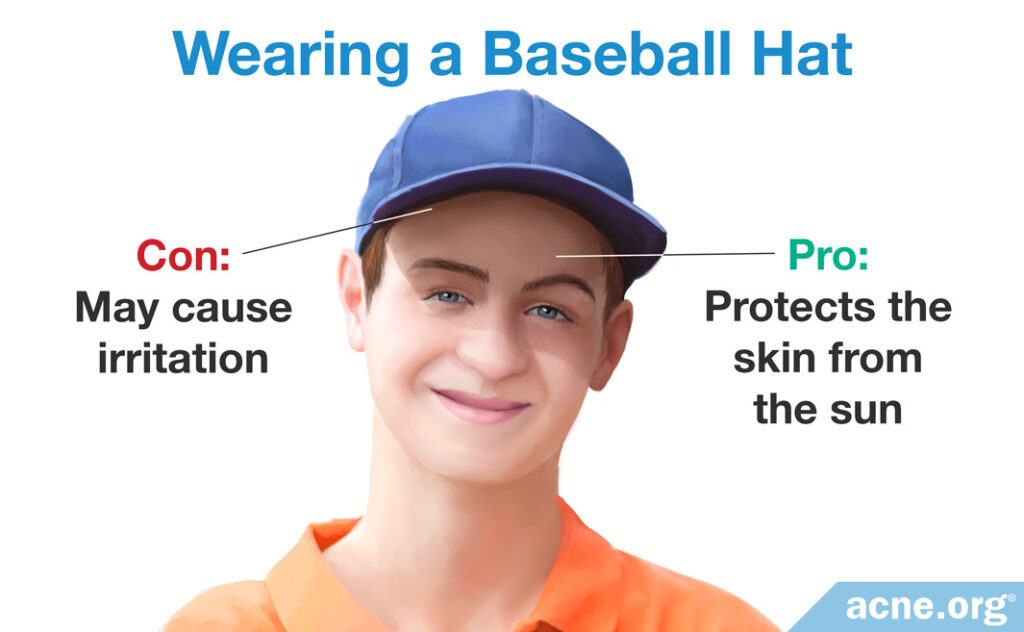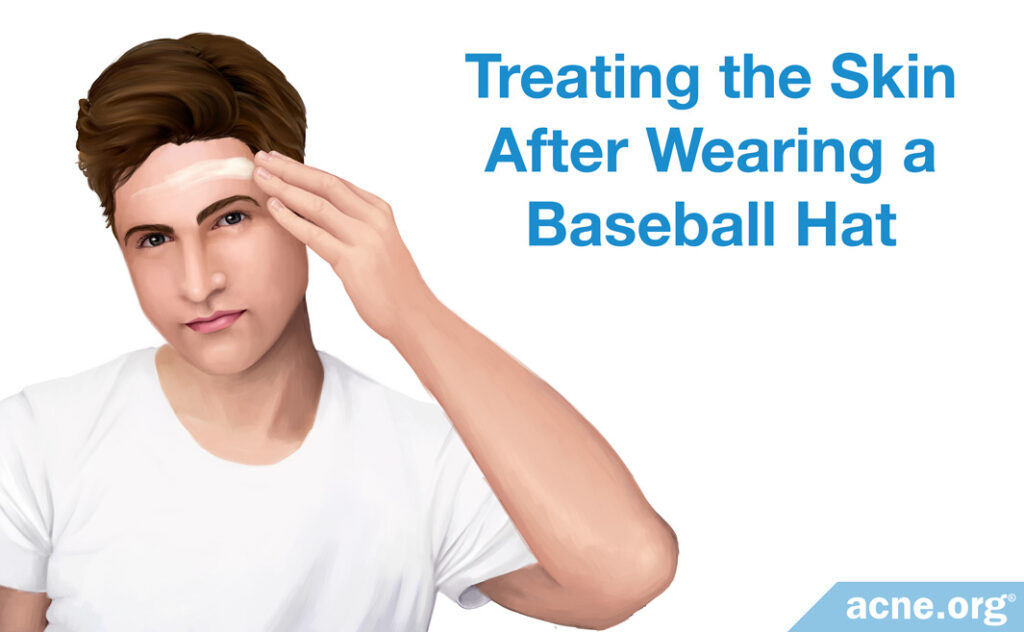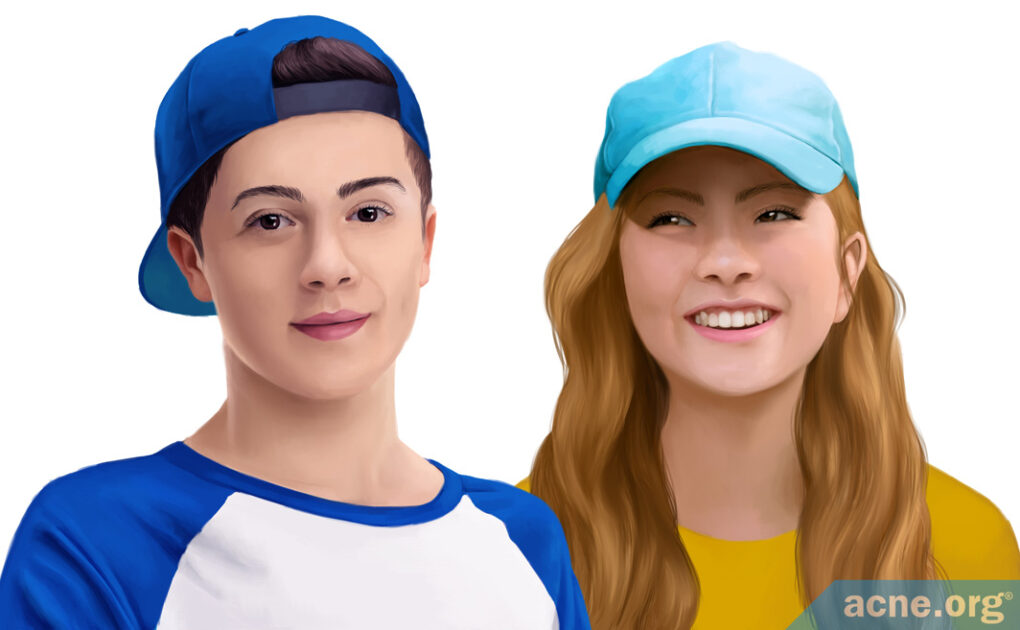Baseball Hats Physically Irritate the Skin, and this Might Lead to Acne. But, Wearing a Baseball Hat Should be Fine as Long as You Properly Treat the Skin Twice a Day.

The Essential Info
Wearing a baseball hat, or any tight-fitting hat, physically irritates the skin. Physical irritation can trigger acne or make existing acne worse.
But wearing a baseball hat has a plus side as well because the brim of the hat protects the skin from sunburns. Sunburns damage the skin and can lead to breakouts in the weeks following a burn.
So don’t worry too much if you like to wear a baseball hat. Just be extra careful to treat the skin of the forehead twice a day with a proper acne-fighting regimen to prevent any irritation-induced acne in that area.

The Science
Anything that rubs against or puts pressure on the skin will lead to physical irritation, and physical irritation can lead to acne. This is such a well-known problem that dermatologists have given it a name: acne mechanica.1-3

Since baseball hats rub against the skin and put pressure on the skin, there is really no way of avoiding physically irritating your skin when you wear one.
But this does not mean that you should never wear a baseball hat. Hats can be good for acne too because they protect the skin from sunburn, which is also a form of irritation that can lead to breakouts.
In other words, wearing a baseball hat is a double-edged sword. On one hand it will physically irritate the skin, but on the other hand it will help protect the skin from sunburn.
Sweating Can Make Irritation Worse
Sweat itself will not cause acne or make acne worse, but sweaty, damp skin can become physically irritated more easily. So if you are wearing a baseball hat and playing sports, or otherwise sweating, this may provoke even more irritation.
Still, even if you are sweating, you can wear a baseball hat as long as you properly treat your skin where the hat comes into contact with your skin.
Treating the Skin After Wearing a Baseball Hat

The Regimen will keep your skin clear, even with some physical irritation from time to time. Be sure to include 10% glycolic acid into the regimen after 1 month. Glycolic acid can help prevent irritation-induced acne.
References
- Mills, O. & Kligman, A. Acne mechanica. Archives of Dermatology 111, 481-483 (1975). https://www.ncbi.nlm.nih.gov/pubmed/123732
- Emer, J., Sivek, R. & Marciniak, B. Sports dermatology: Part 1 of 2 Traumatic or mechanical injuries, inflammatory conditions, and exacerbations of pre-existing conditions. J Clin Aesthet Dermatol. 8, 31-43 (2015). https://pubmed.ncbi.nlm.nih.gov/26060516/
- Basler, R. S. & Garcia, M. A. Acing common skin problems in tennis players. Phys Sportsmed. 26, 37-44 (1998). https://pubmed.ncbi.nlm.nih.gov/20086771/
 Acne.org Products
Acne.org Products